 Search by Keyword
Sign Up Below for our MONTHLY BEATLES TRIVIA QUIZ!
|
"BABY, YOU'RE A RICH MAN"
(John Lennon – Paul McCartney)
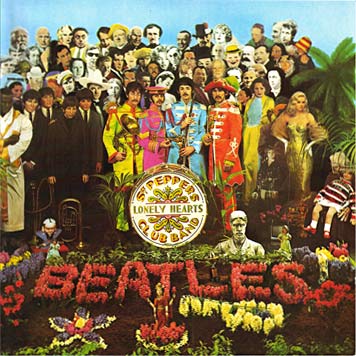 With the band's masterpiece “Sgt. Pepper's Lonely Hearts Club Band” in the can, The Beatles found themselves somewhat inspirationally spent. They had poured their hearts into the making of that album, the project being the result of their new-found freedom from touring and movie making. They wanted desperately to extricate themselves from other mundane pop star activities in order to concentrate on their art. And on April 21st, 1967, the album, their greatest artistic expression, was complete and being readied for release. With the band's masterpiece “Sgt. Pepper's Lonely Hearts Club Band” in the can, The Beatles found themselves somewhat inspirationally spent. They had poured their hearts into the making of that album, the project being the result of their new-found freedom from touring and movie making. They wanted desperately to extricate themselves from other mundane pop star activities in order to concentrate on their art. And on April 21st, 1967, the album, their greatest artistic expression, was complete and being readied for release.
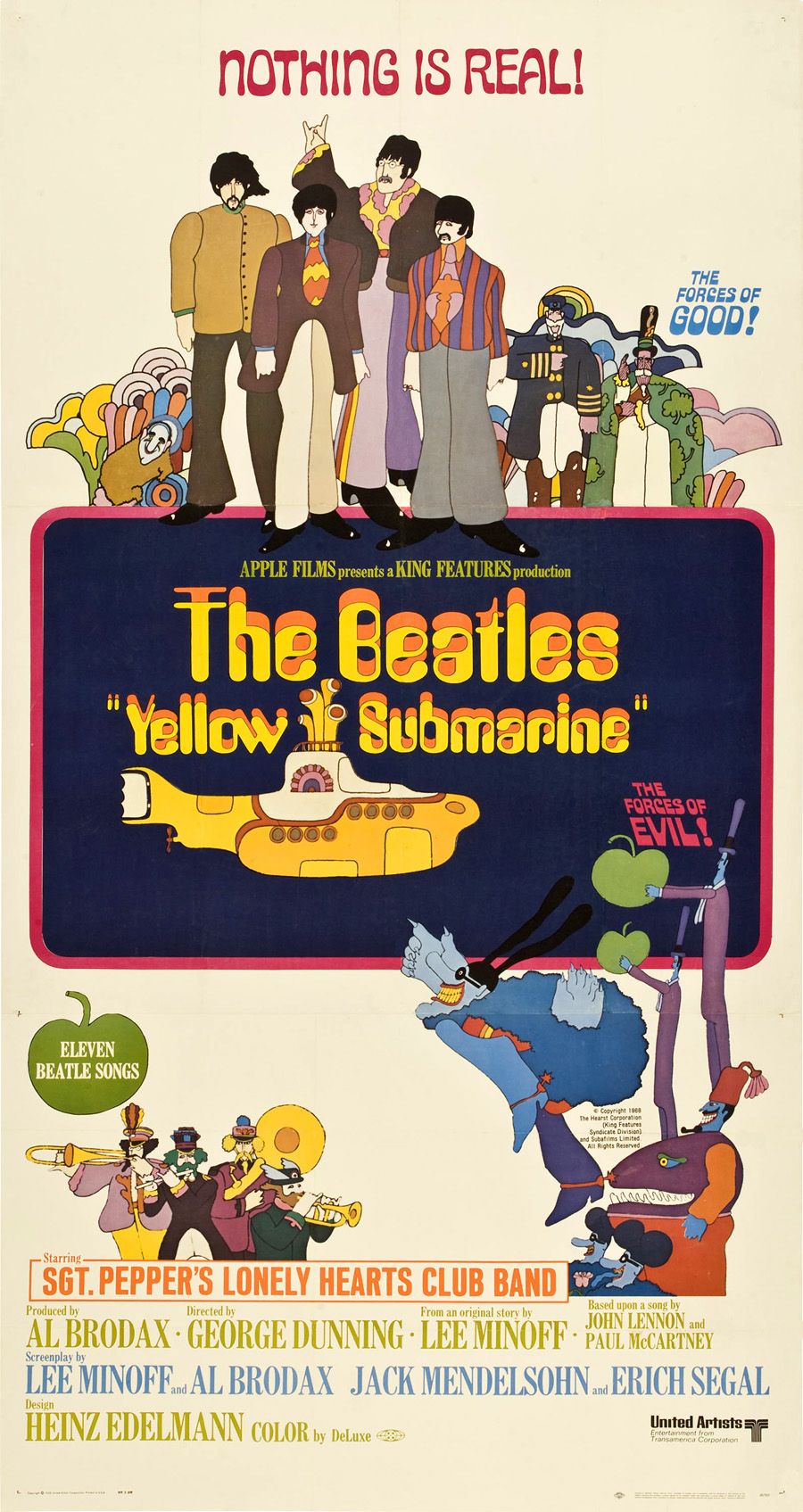 Although they had no plans to make a full-length feature movie as they had in previous years, they still had a movie contract with United Artists to fulfill. A decision was made to have an animated movie created in The Beatles' name that featured their music, the resulting film entitled “Yellow Submarine.” The movie's story line was to be based loosely on popular Beatles songs with very little input from the group needed. This thrilled them, the plan being to fulfill their movie contract without having to learn lines or be on any movie set. The movie would be done by professional animators and story-writers.
However, The Beatles agreed to be involved in the making of this film by doing what they did best; providing a few new original songs to be used in the movie. Apart from a brief cameo appearance at the end of the film, and maybe a story-line idea thrown in here or there, this is all The Beatles had to do. With this in mind, John and Paul put their individual ideas together to create a song intended for this movie, the result being “Baby, You're A Rich Man.” Although they had no plans to make a full-length feature movie as they had in previous years, they still had a movie contract with United Artists to fulfill. A decision was made to have an animated movie created in The Beatles' name that featured their music, the resulting film entitled “Yellow Submarine.” The movie's story line was to be based loosely on popular Beatles songs with very little input from the group needed. This thrilled them, the plan being to fulfill their movie contract without having to learn lines or be on any movie set. The movie would be done by professional animators and story-writers.
However, The Beatles agreed to be involved in the making of this film by doing what they did best; providing a few new original songs to be used in the movie. Apart from a brief cameo appearance at the end of the film, and maybe a story-line idea thrown in here or there, this is all The Beatles had to do. With this in mind, John and Paul put their individual ideas together to create a song intended for this movie, the result being “Baby, You're A Rich Man.”
Songwriting History
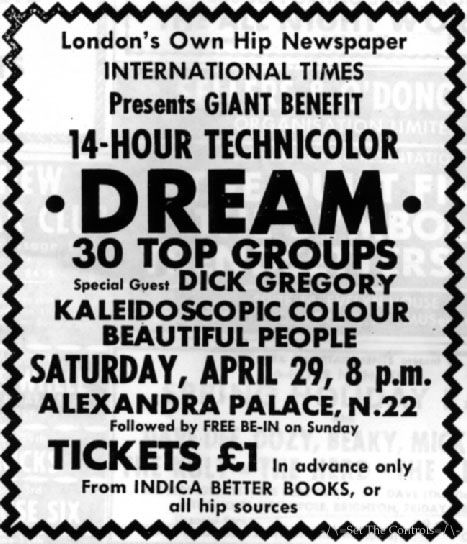 Ian MacDonald, in his book “Revolution In The Head,” makes an astute observation regarding what most likely was the initial inspiration for “Baby, You're A Rich Man.” He states: “The 'beautiful people' was what the West Coast hippies called themselves. The '14-Hour Technicolor Dream,' an all-night festival at Alexandra Palace on April 29th, 1967 which Lennon attended, was the first tribal gathering of the British "beautiful people." This, and the fact that the session for 'Baby, You're A Rich Man' was arranged at short notice, suggest that the song was inspired by the event.” Ian MacDonald, in his book “Revolution In The Head,” makes an astute observation regarding what most likely was the initial inspiration for “Baby, You're A Rich Man.” He states: “The 'beautiful people' was what the West Coast hippies called themselves. The '14-Hour Technicolor Dream,' an all-night festival at Alexandra Palace on April 29th, 1967 which Lennon attended, was the first tribal gathering of the British "beautiful people." This, and the fact that the session for 'Baby, You're A Rich Man' was arranged at short notice, suggest that the song was inspired by the event.”
 This was one of the probable inspirations for John to start writing a song entitled “One Of The Beautiful People.” Paul, in his book “Many Years From Now,” relates another of John's inspirations: “There was a lot of talk in the newspapers then about the beautiful people. That was what they called them...the question then was, 'how does it feel to be one of the beautiful people?'” In fact, the word "beautiful" was becoming a habitual word in Beatles language at this time. “At the back of my mind somewhere,” Paul stated in interview to International Times in January of 1967, “there is something which tells me that everything is beautiful...that everything's great and there's no bad ever if I can think of it all as great.” This was one of the probable inspirations for John to start writing a song entitled “One Of The Beautiful People.” Paul, in his book “Many Years From Now,” relates another of John's inspirations: “There was a lot of talk in the newspapers then about the beautiful people. That was what they called them...the question then was, 'how does it feel to be one of the beautiful people?'” In fact, the word "beautiful" was becoming a habitual word in Beatles language at this time. “At the back of my mind somewhere,” Paul stated in interview to International Times in January of 1967, “there is something which tells me that everything is beautiful...that everything's great and there's no bad ever if I can think of it all as great.”
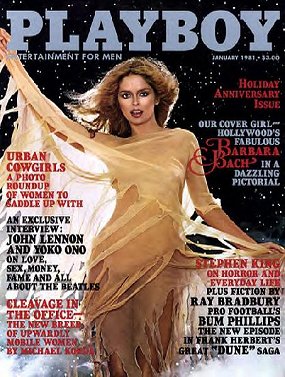 John himself clarified the writing process for what became “Baby, You're A Rich Man” in his 1980 Playboy interview. “That is a combination of two sperate pieces, Paul's and mine, put together and forced into a song. One half was all mine (singing): 'How does it feel to be one of the beautiful people, now that you know who you are, da da da da...' And then Paul comes in with (singing): 'Baby, you're a rich man...' because he just had this 'Baby, you're a rich man' around.” John himself clarified the writing process for what became “Baby, You're A Rich Man” in his 1980 Playboy interview. “That is a combination of two sperate pieces, Paul's and mine, put together and forced into a song. One half was all mine (singing): 'How does it feel to be one of the beautiful people, now that you know who you are, da da da da...' And then Paul comes in with (singing): 'Baby, you're a rich man...' because he just had this 'Baby, you're a rich man' around.”
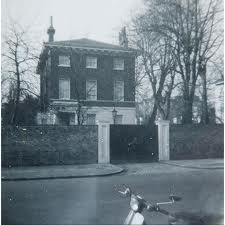 The verses may initially have been written by John and the chorus by Paul, but there was some battering around of ideas at a writing session between the two. “'Baby, You're A Rich Man' was co-written by John and me at Cavendish Avenue,” Paul explains. “'Tuned to a natural E' is a line I remember us writing, a slight pun on the word 'naturally' – 'natural E.'” The verses may initially have been written by John and the chorus by Paul, but there was some battering around of ideas at a writing session between the two. “'Baby, You're A Rich Man' was co-written by John and me at Cavendish Avenue,” Paul explains. “'Tuned to a natural E' is a line I remember us writing, a slight pun on the word 'naturally' – 'natural E.'”
Although never verified, the “rich man” referred to in Paul's section of the song is rumored to refer to their manager Brian Epstein. “The point was,” stated John, “stop moaning. You're a rich man and we're all rich men, hey, hey, baby!.”
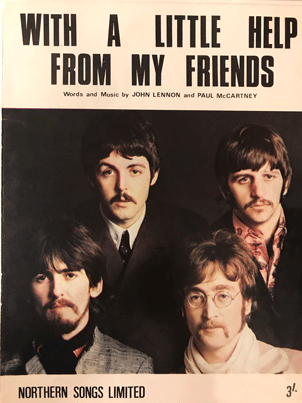 The question/answer lyric writing that John had just put to good use in the recently written “With A Little Help From My Friends” saw a reprisal in this song. Lennon's “vague witticisms,” as described by Tim Riley in his book “Tell Me Why,” are once again on display: “How often have you been there? / Often enough to know” and “What did you see when you were there? / Nothing that doesn't show” being prime examples of continuing the “What do you see when you turn out the light? / I can't tell you but I know it's mine” from the previous song. The question/answer lyric writing that John had just put to good use in the recently written “With A Little Help From My Friends” saw a reprisal in this song. Lennon's “vague witticisms,” as described by Tim Riley in his book “Tell Me Why,” are once again on display: “How often have you been there? / Often enough to know” and “What did you see when you were there? / Nothing that doesn't show” being prime examples of continuing the “What do you see when you turn out the light? / I can't tell you but I know it's mine” from the previous song.
Recording History
 "The Beatles couldn't get into the studio for the next couple of nights,” recalled Geoff Emerick in his 2007 book “Here, There And Everywhere,” "which forced the band to record 'Baby, You're A Rich Man'...at Olympic Studios...It was around this time that The Beatles began frequenting outside studios more and more, for a variety of reasons." Olympic Studios staffers were even known for share a joint with the artists recording there, something that EMI Studios would not consider for even a second. "The Beatles couldn't get into the studio for the next couple of nights,” recalled Geoff Emerick in his 2007 book “Here, There And Everywhere,” "which forced the band to record 'Baby, You're A Rich Man'...at Olympic Studios...It was around this time that The Beatles began frequenting outside studios more and more, for a variety of reasons." Olympic Studios staffers were even known for share a joint with the artists recording there, something that EMI Studios would not consider for even a second.
 Geoff Emerick goes on to explain what these reasons may have been: “Perhaps they simply had cabin fever and were sick of staring at the same four walls. There weren't really any amenities at (EMI); there were no couches or armchairs in our cramped control rooms, just a couple uncomfortable, hard chairs. In contrast, when they went into Olympic,(they saw) large control rooms with plush leather sofas and comfortable chairs to sit in, all of this accented by low lighting and a modern décor...In addition, by mid-1967, every other major studio in London had an eight-track machine, and we still had only four-track, which all really made us seem like we were lagging far behind...There was also a much more relaxed attitude toward drugs in other studios, and it wouldn't surprise me if the staff at those facilities would partake with their clients, so perhaps The Beatles related to the other engineers better...I imagine they thought it was really cool to share a joint with the control room staff. In contrast, we must have seemed really straight and square.” Geoff Emerick goes on to explain what these reasons may have been: “Perhaps they simply had cabin fever and were sick of staring at the same four walls. There weren't really any amenities at (EMI); there were no couches or armchairs in our cramped control rooms, just a couple uncomfortable, hard chairs. In contrast, when they went into Olympic,(they saw) large control rooms with plush leather sofas and comfortable chairs to sit in, all of this accented by low lighting and a modern décor...In addition, by mid-1967, every other major studio in London had an eight-track machine, and we still had only four-track, which all really made us seem like we were lagging far behind...There was also a much more relaxed attitude toward drugs in other studios, and it wouldn't surprise me if the staff at those facilities would partake with their clients, so perhaps The Beatles related to the other engineers better...I imagine they thought it was really cool to share a joint with the control room staff. In contrast, we must have seemed really straight and square.”
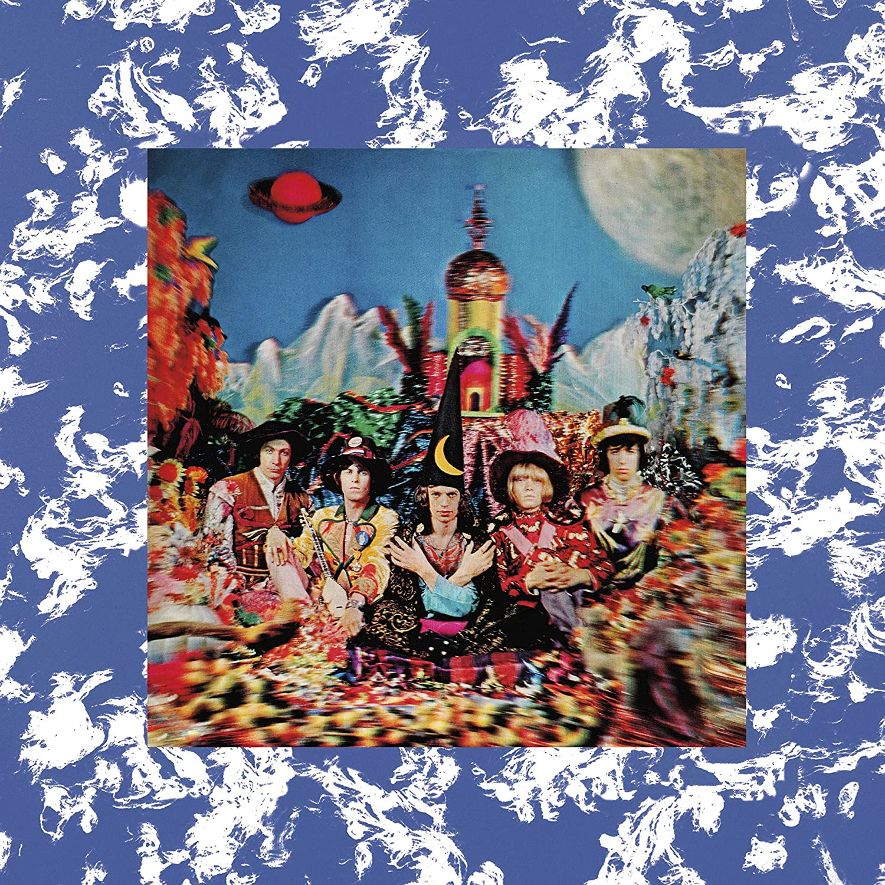 In any event, on May 11th, 1967, just days after the contracts were signed for the “Yellow Submarine” movie project, they entered Olympic Sound Studios for work on the first new song that The Beatles were offering up for this animated feature. “Olympic was one of the top independent studios in Britain,” Mark Lewisohn explained in his 1988 book “The Beatles Recording Sessions,” "turning out many hit records. The Rolling Stones had taken to recording there, even though its studio manager Keith Grant was equally keen to promote the venue's valuable film soundtrack work." The Rolling Stones were then busy recording their album "Their Satanic Majesties Request" at Olympic Studios. In any event, on May 11th, 1967, just days after the contracts were signed for the “Yellow Submarine” movie project, they entered Olympic Sound Studios for work on the first new song that The Beatles were offering up for this animated feature. “Olympic was one of the top independent studios in Britain,” Mark Lewisohn explained in his 1988 book “The Beatles Recording Sessions,” "turning out many hit records. The Rolling Stones had taken to recording there, even though its studio manager Keith Grant was equally keen to promote the venue's valuable film soundtrack work." The Rolling Stones were then busy recording their album "Their Satanic Majesties Request" at Olympic Studios.
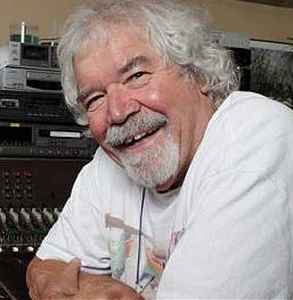 George Martin was used as producer of the session, although the aforementioned Keith Grant oversaw engineering duties. “The Beatles said that this was the fastest record they had ever made,” Keith Grant recalled, adding: “They were used to a much more leisurely pace. We started their session at about 9 pm.” George Martin was used as producer of the session, although the aforementioned Keith Grant oversaw engineering duties. “The Beatles said that this was the fastest record they had ever made,” Keith Grant recalled, adding: “They were used to a much more leisurely pace. We started their session at about 9 pm.”
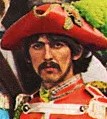 Twelve takes of the rhythm track were recorded first with the instrumentation being Ringo's drums on track two and Paul on piano on track three, George's electric guitar also being recorded on another open track until a decision was made for him to sit out the rhythm track for now because of having problems keeping his guitar in tune. Two false starts of this rhythm track, designated as "take 11" on "Anthology 4," revealed this problem, prompting Paul to state "You gotta get in tune, George." After Harrison asked, "Is that how the beginning goes?" and Paul relies, "G to C, G to C," Paul asked, "Should we just do drums and piano on this (rhythm track) John?" This prompted Lennon to reply, "Yeah, that guitar's a curse, man." From this point, the decision was made to add George's guitar part as an overdub later. Twelve takes of the rhythm track were recorded first with the instrumentation being Ringo's drums on track two and Paul on piano on track three, George's electric guitar also being recorded on another open track until a decision was made for him to sit out the rhythm track for now because of having problems keeping his guitar in tune. Two false starts of this rhythm track, designated as "take 11" on "Anthology 4," revealed this problem, prompting Paul to state "You gotta get in tune, George." After Harrison asked, "Is that how the beginning goes?" and Paul relies, "G to C, G to C," Paul asked, "Should we just do drums and piano on this (rhythm track) John?" This prompted Lennon to reply, "Yeah, that guitar's a curse, man." From this point, the decision was made to add George's guitar part as an overdub later.
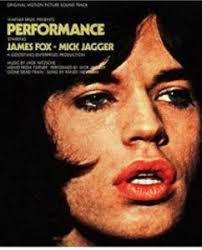 Engineer Keith Grant recalled: “They kept on playing, version after version, then we spooled back to the one they liked and overdubbed the vocals.” "Take 12" was considered the best rhythm track, onto which John and Paul overdubbed their vocals onto track four of the tape. Before "bouncing" this take onto another tape for accommodating this vocal overdub, (the second of two reduction mixes being deemed the best) a good degree of chatter between the vocalists were captured on tape. After McCartney said something about "union rules," Beatles associate Mal Evans stated, "I didn't hear you about the cokes, but..." to which John interrupts with "uh, we'd like some cokes, Mal!" In reference to Mick Jagger and Keith Richards having to appear at Chichester Magistrates Court to face charges concerning illegal drug possession the previous day, Paul added, "And if you've got some cannabis resin...cannabis resin too!" "Yeah, if you've got any cannabis, send it in," Lennon humorously instructed, McCartney interjecting, "We got that taped for the high court tomorrow!" Since the tape box from this session contains the notation "The Beatles + Mick Jagger?", this may indicate that not only was The Rolling Stones vocalist present at this session (possibly contributing background vocals), but this inside joke by Paul and John was directed at Mick Jagger in good humor. Engineer Keith Grant recalled: “They kept on playing, version after version, then we spooled back to the one they liked and overdubbed the vocals.” "Take 12" was considered the best rhythm track, onto which John and Paul overdubbed their vocals onto track four of the tape. Before "bouncing" this take onto another tape for accommodating this vocal overdub, (the second of two reduction mixes being deemed the best) a good degree of chatter between the vocalists were captured on tape. After McCartney said something about "union rules," Beatles associate Mal Evans stated, "I didn't hear you about the cokes, but..." to which John interrupts with "uh, we'd like some cokes, Mal!" In reference to Mick Jagger and Keith Richards having to appear at Chichester Magistrates Court to face charges concerning illegal drug possession the previous day, Paul added, "And if you've got some cannabis resin...cannabis resin too!" "Yeah, if you've got any cannabis, send it in," Lennon humorously instructed, McCartney interjecting, "We got that taped for the high court tomorrow!" Since the tape box from this session contains the notation "The Beatles + Mick Jagger?", this may indicate that not only was The Rolling Stones vocalist present at this session (possibly contributing background vocals), but this inside joke by Paul and John was directed at Mick Jagger in good humor.
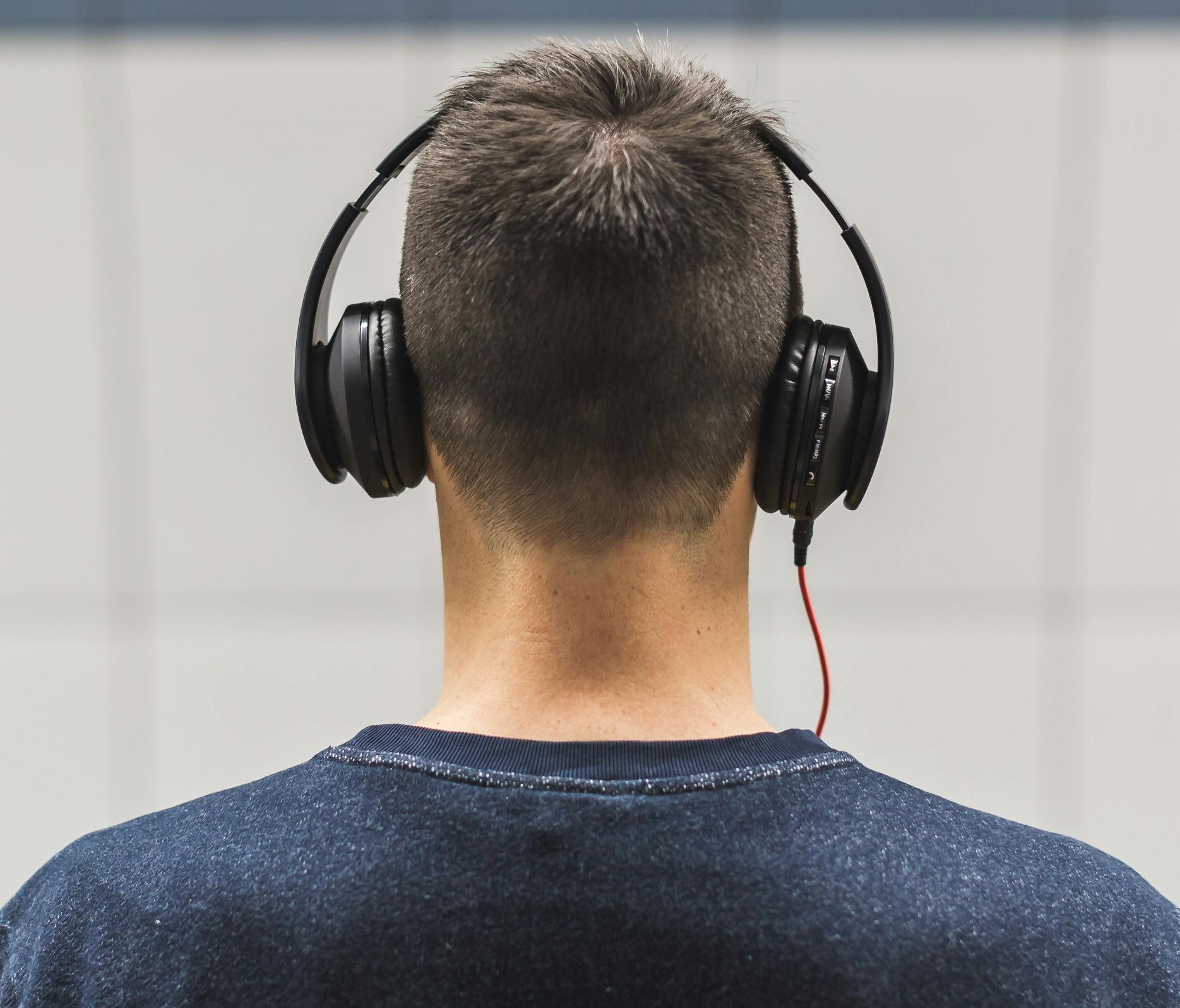 The engineer then proceeded to spool back the tape of "take 12," which came through at an extremely high volume through John and Paul's headphones, prompting both of them to shout, "OH MY GOD!" Paul stating, "that was very loud in here," John then incorporating this event into the first lyric of the song, "How does it feel to be one of the LOUDEST people?" An anxious Lennon then stated, "OK, let's hear some rhythm and soul from London now, please, come along!" during the final moments of this vocal overdub, it becomes obvious that both John and Paul are having quite a good time, Lennon periodically rolling his R's when singing "Rrrrich man" while they both whooped and hollered until the take was over. "How do you feel about that, boys," Lennon asked, Paul repeating, "Well, y'know, I mean, John, we felt swinging, I mean, we felt swinging it, I mean, we felt swinging..." (Legend has it that John sings “Baby, you're a rich fag jew” as a reference to Brian Epstein toward the conclusion of the song, but this rumor is dispelled with the release of "take 12" on "Anthology 4" in 2025 where the entire vocal performance is included and this phrase is definitely not heard.) The engineer then proceeded to spool back the tape of "take 12," which came through at an extremely high volume through John and Paul's headphones, prompting both of them to shout, "OH MY GOD!" Paul stating, "that was very loud in here," John then incorporating this event into the first lyric of the song, "How does it feel to be one of the LOUDEST people?" An anxious Lennon then stated, "OK, let's hear some rhythm and soul from London now, please, come along!" during the final moments of this vocal overdub, it becomes obvious that both John and Paul are having quite a good time, Lennon periodically rolling his R's when singing "Rrrrich man" while they both whooped and hollered until the take was over. "How do you feel about that, boys," Lennon asked, Paul repeating, "Well, y'know, I mean, John, we felt swinging, I mean, we felt swinging it, I mean, we felt swinging..." (Legend has it that John sings “Baby, you're a rich fag jew” as a reference to Brian Epstein toward the conclusion of the song, but this rumor is dispelled with the release of "take 12" on "Anthology 4" in 2025 where the entire vocal performance is included and this phrase is definitely not heard.)
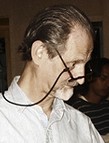 More overdubs followed afterward, including Paul's bass (on track one), George's electric guitar, Paul playing an additional piano, Ringo on tambourine and maracas, George and Ringo adding handclaps, and Eddie Kramer (future producer for Jimi Hendrix and Kiss who happened to be the 2nd engineer on the session) adding a bit of vibraphone. A droning sound resembling a tamboura can also be detected on the finished recording, undoubtedly played by George. Since the second of the two reduction mixes was being used for these overdubs, documentation identifies this as "take two," a procedure that differs from usual EMI documentation. More overdubs followed afterward, including Paul's bass (on track one), George's electric guitar, Paul playing an additional piano, Ringo on tambourine and maracas, George and Ringo adding handclaps, and Eddie Kramer (future producer for Jimi Hendrix and Kiss who happened to be the 2nd engineer on the session) adding a bit of vibraphone. A droning sound resembling a tamboura can also be detected on the finished recording, undoubtedly played by George. Since the second of the two reduction mixes was being used for these overdubs, documentation identifies this as "take two," a procedure that differs from usual EMI documentation.
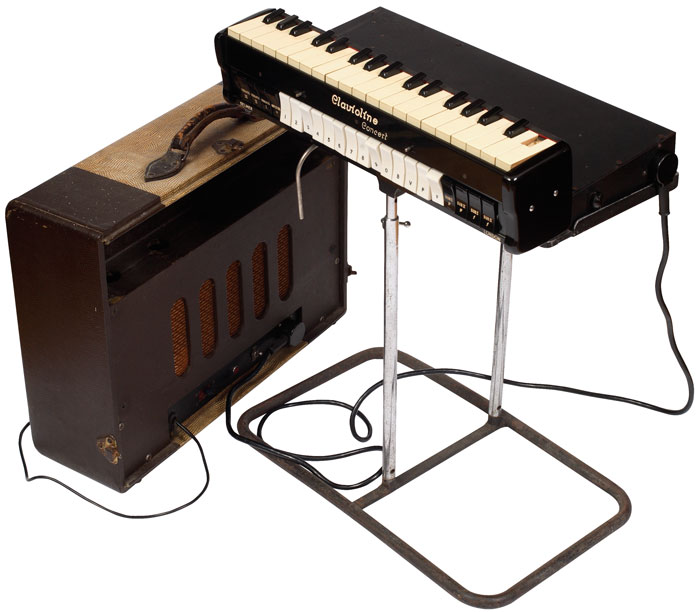 One other overdub recorded for this song utilized an interesting instrument called a Clavioline, this being played by Lennon. Eddie Kramer wrote: “We wanted to make sure they walked out of (Olympic Studios) being completely blown away, which they were. So there was a Clavioline that happened to be in the studio on that day, and John played it. This was a French electronic instrument with a small keyboard. It had a little strip which you put your thumb on and moved it up and down the length of the keyboard as you played, to get vibrato.” One other overdub recorded for this song utilized an interesting instrument called a Clavioline, this being played by Lennon. Eddie Kramer wrote: “We wanted to make sure they walked out of (Olympic Studios) being completely blown away, which they were. So there was a Clavioline that happened to be in the studio on that day, and John played it. This was a French electronic instrument with a small keyboard. It had a little strip which you put your thumb on and moved it up and down the length of the keyboard as you played, to get vibrato.”
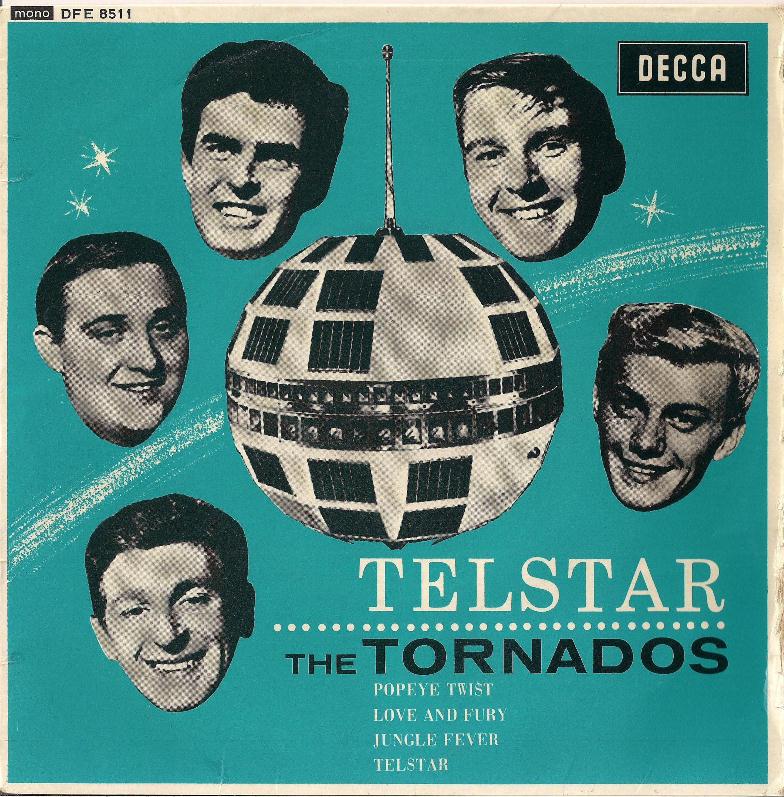 Andy Babiuk's 2001 book “Beatles Gear” gives extensive detail concerning this unique instrument. “The Clavioline was a monophonic keyboard, which means that only one note sounded at a time, precluding chords. It was in effect a predecessor of modern synthesizers. It consisted of two units: the keyboard, with its own built-in valve (tube) sound generator; and the separate amplifier-and-speaker box...A built-in octave transposer switch gave the keyboard's single oscillator a five-octave range. The overall volume was controlled by a knee-operated lever. The Clavioline's unusual sound, heard whirling intermittently through 'Baby, You're A Rich Man,' had also been evident on 'Telstar,' a big hit for the British group The Tornados on both sides of the Atlantic in 1962.” Andy Babiuk's 2001 book “Beatles Gear” gives extensive detail concerning this unique instrument. “The Clavioline was a monophonic keyboard, which means that only one note sounded at a time, precluding chords. It was in effect a predecessor of modern synthesizers. It consisted of two units: the keyboard, with its own built-in valve (tube) sound generator; and the separate amplifier-and-speaker box...A built-in octave transposer switch gave the keyboard's single oscillator a five-octave range. The overall volume was controlled by a knee-operated lever. The Clavioline's unusual sound, heard whirling intermittently through 'Baby, You're A Rich Man,' had also been evident on 'Telstar,' a big hit for the British group The Tornados on both sides of the Atlantic in 1962.”
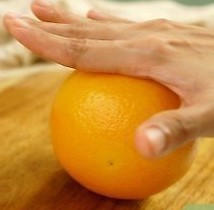 As for John Lennon's use of the instrument on this day, one apocryphal story suggests that he achieved his rapid-fire wail by rolling an orange up and down the keyboard. This, of course, has not been verified, but makes for an interesting anecdote when relating the details of this recording session, not to mention John's unique personality. As for John Lennon's use of the instrument on this day, one apocryphal story suggests that he achieved his rapid-fire wail by rolling an orange up and down the keyboard. This, of course, has not been verified, but makes for an interesting anecdote when relating the details of this recording session, not to mention John's unique personality.
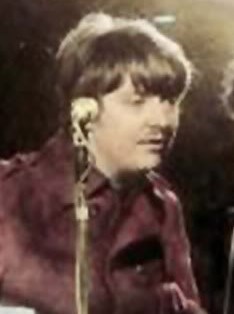 As far as the vocals were concerned, both Keith Grant and Eddie Kramer discussed this session with engineer George Chkiantz, who thus related: “They were both amazed at John's voice. They had long been wondering what it would be like to record it and they were saying how great it was. They couldn't believe anyone could sing that well.” As far as the vocals were concerned, both Keith Grant and Eddie Kramer discussed this session with engineer George Chkiantz, who thus related: “They were both amazed at John's voice. They had long been wondering what it would be like to record it and they were saying how great it was. They couldn't believe anyone could sing that well.”
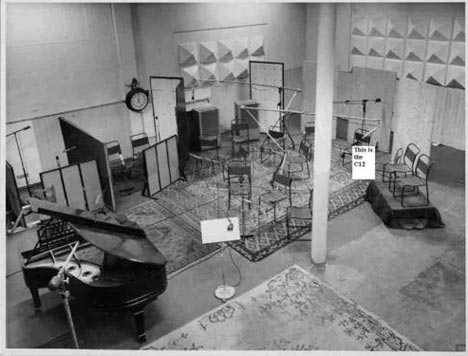 The one and only mono mix of the song was then created, making “Baby, You're A Rich Man” the first Beatles song to be recorded and mixed for record entirely outside of EMI. Keith Grant explained: “It was finished and mixed by about 3 am.” Paul himself remembers this day in his 1997 book “Many Years From Now” as "a rather exciting recording session at Olympic in Barnes, where Keith Grant mixed it, instantly, right there. He stood up at the console as he mixed it, so it was a very exciting mix, we were really quite buzzed. I always liked that track." Noteworthy on this mono mix is the prominence given to John's Clavioline performance and the relative absence of George's guitar track. The one and only mono mix of the song was then created, making “Baby, You're A Rich Man” the first Beatles song to be recorded and mixed for record entirely outside of EMI. Keith Grant explained: “It was finished and mixed by about 3 am.” Paul himself remembers this day in his 1997 book “Many Years From Now” as "a rather exciting recording session at Olympic in Barnes, where Keith Grant mixed it, instantly, right there. He stood up at the console as he mixed it, so it was a very exciting mix, we were really quite buzzed. I always liked that track." Noteworthy on this mono mix is the prominence given to John's Clavioline performance and the relative absence of George's guitar track.
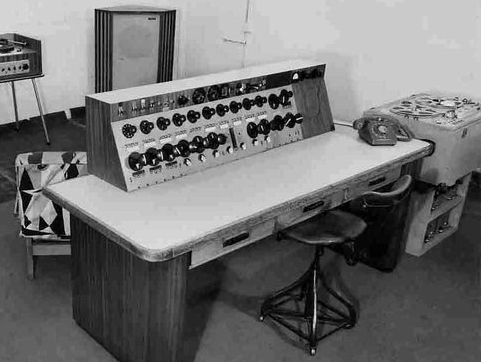 “Whenever they did a track at an outside studio,” related Geoff Emerick, “I usually had to do a lot of repair work to the tapes because they simply could not achieve the sound they were used to anywhere else. This time around, they actually got the entire song done, including the final mix, in a single session. It had been a long time since they'd been so efficient. I had to admit that the results were pretty good...Keith Grant did the session himself and he knew what he was doing. In addition, Olympic's mixing console was a totally different design than ours and was capable of passing lower frequencies, so there was quite a smooth bass sound, which I thought was great.”
The next time attention was given to the song was on August 22nd, 1968, when George Martin made a copy of this mono master in the control room of EMI Studio Two. It was then taken away by George Martin, possibly to forward to the makers of the "Yellow Submarine" movie, a bit of which being included in the American version of the film. “Whenever they did a track at an outside studio,” related Geoff Emerick, “I usually had to do a lot of repair work to the tapes because they simply could not achieve the sound they were used to anywhere else. This time around, they actually got the entire song done, including the final mix, in a single session. It had been a long time since they'd been so efficient. I had to admit that the results were pretty good...Keith Grant did the session himself and he knew what he was doing. In addition, Olympic's mixing console was a totally different design than ours and was capable of passing lower frequencies, so there was quite a smooth bass sound, which I thought was great.”
The next time attention was given to the song was on August 22nd, 1968, when George Martin made a copy of this mono master in the control room of EMI Studio Two. It was then taken away by George Martin, possibly to forward to the makers of the "Yellow Submarine" movie, a bit of which being included in the American version of the film.
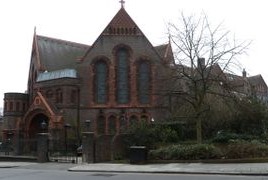 Since the song was only released in mono as a single, a stereo mix was not created until October 22nd, 1971 in London's Air Studios by its propriator George Martin with Geoff Emerick as engineer. Certain differences are evident, most noteworthy being the presence of George Harrison's guitar overdub. The end of the vocalized “eleven” witnessed at the very beginning of the mono mix (possibly someone attempting to identify what take it was) was faded out of this stereo mix. Also, there is an effect present in strategic places within the verses of the mono mix that is referred to by some as a “spin” (such as after the lines “eye can see” and “enough to know”). These “spin” effects are missing in the stereo mix. This stereo mix is also nine seconds shorter than the mono mix. In the US, this stereo mix was first heard on the CD release of the album “Magical Mystery Tour.” Since the song was only released in mono as a single, a stereo mix was not created until October 22nd, 1971 in London's Air Studios by its propriator George Martin with Geoff Emerick as engineer. Certain differences are evident, most noteworthy being the presence of George Harrison's guitar overdub. The end of the vocalized “eleven” witnessed at the very beginning of the mono mix (possibly someone attempting to identify what take it was) was faded out of this stereo mix. Also, there is an effect present in strategic places within the verses of the mono mix that is referred to by some as a “spin” (such as after the lines “eye can see” and “enough to know”). These “spin” effects are missing in the stereo mix. This stereo mix is also nine seconds shorter than the mono mix. In the US, this stereo mix was first heard on the CD release of the album “Magical Mystery Tour.”
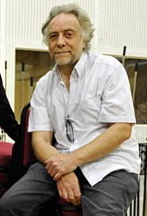 A further stereo mix of "Baby You're A Rich Man" was made in 1999 for the release of the LP “Yellow Submarine Songtrack.” The engineering team working on this project comprised Peter Cobbin, Paul Hicks, Mirek Stiles and also Allan Rouse. The technology of the 1990's made for a cleaner and more vibrant version of the song, the excitement of the recording session coming through very well for the listener. A further stereo mix of "Baby You're A Rich Man" was made in 1999 for the release of the LP “Yellow Submarine Songtrack.” The engineering team working on this project comprised Peter Cobbin, Paul Hicks, Mirek Stiles and also Allan Rouse. The technology of the 1990's made for a cleaner and more vibrant version of the song, the excitement of the recording session coming through very well for the listener.
 Sometime in 2025, producer Giles Martin, with engineers Joe Wyatt and Greg McAllister, created a mix of "take 11 and 12" of the original Olympic sessions of "Baby You're A Rich Man" for inclusion on "Anthology 4," this being released in various editions in 2025 as detailed below. Sometime in 2025, producer Giles Martin, with engineers Joe Wyatt and Greg McAllister, created a mix of "take 11 and 12" of the original Olympic sessions of "Baby You're A Rich Man" for inclusion on "Anthology 4," this being released in various editions in 2025 as detailed below.
Song Structure and Style
The structure of "Baby, You're A Rich Man" is quite standard within the Beatles catalog, namely a 'verse/ verse/ chorus/ verse/ chorus' format (or aabab) with an introduction and repeating conclusion added on.
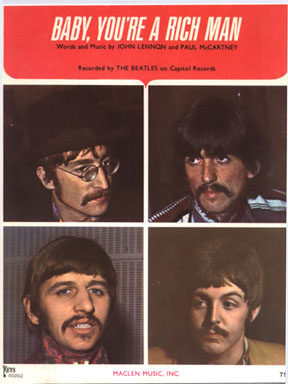 The introduction is eight measures long and consists of the basic rhythm track of guitar and drums with the overdubbed piano and tambourine throughout all eight measures. Interestingly, George's guitar thumps propel the beat of the song nicely in this intro, even slightly overshadowing Ringo's usual time-keeping role in the early moments of the song. The overdubbed maracas appear at the beginning of the second measure, Paul's bass emerges in the middle of the third measure, John's "snake-charming" Clavioline appears first at the very end of the third measure, and then the handclaps come in in the fifth measure. All of these elements are brought in one at a time as if to build up the arrangement layer by layer. The introduction is eight measures long and consists of the basic rhythm track of guitar and drums with the overdubbed piano and tambourine throughout all eight measures. Interestingly, George's guitar thumps propel the beat of the song nicely in this intro, even slightly overshadowing Ringo's usual time-keeping role in the early moments of the song. The overdubbed maracas appear at the beginning of the second measure, Paul's bass emerges in the middle of the third measure, John's "snake-charming" Clavioline appears first at the very end of the third measure, and then the handclaps come in in the fifth measure. All of these elements are brought in one at a time as if to build up the arrangement layer by layer.
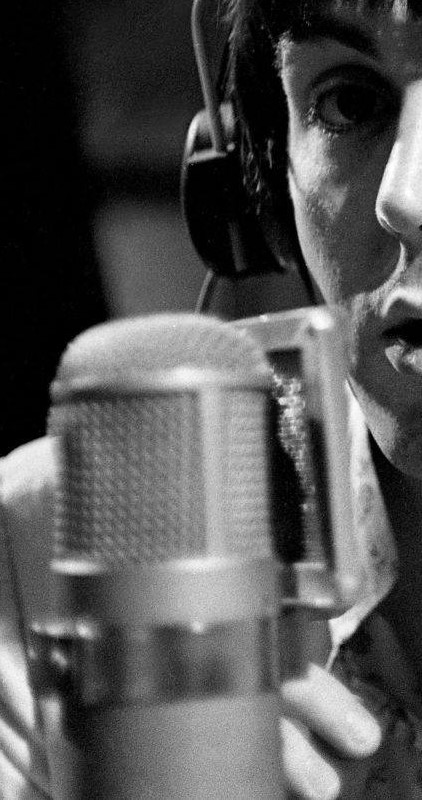 The first eleven-measure verse then appears as John's Clavioline fades from view and his vocals appear, sung partially in falsetto. The instrumentation of the introduction continues throughout the verse with the Clavioline filling in the open spaces of the lyrics in measures five and nine. Another feature is the two breaks that appear in the verse; the first break is in measure seven with only a slight piano being heard along with all of the percussion, the second in measure eleven which cuts out all percussion and only features piano chords playing in an eighth-note rhythm that swells in volume as the measure ends. The first eleven-measure verse then appears as John's Clavioline fades from view and his vocals appear, sung partially in falsetto. The instrumentation of the introduction continues throughout the verse with the Clavioline filling in the open spaces of the lyrics in measures five and nine. Another feature is the two breaks that appear in the verse; the first break is in measure seven with only a slight piano being heard along with all of the percussion, the second in measure eleven which cuts out all percussion and only features piano chords playing in an eighth-note rhythm that swells in volume as the measure ends.
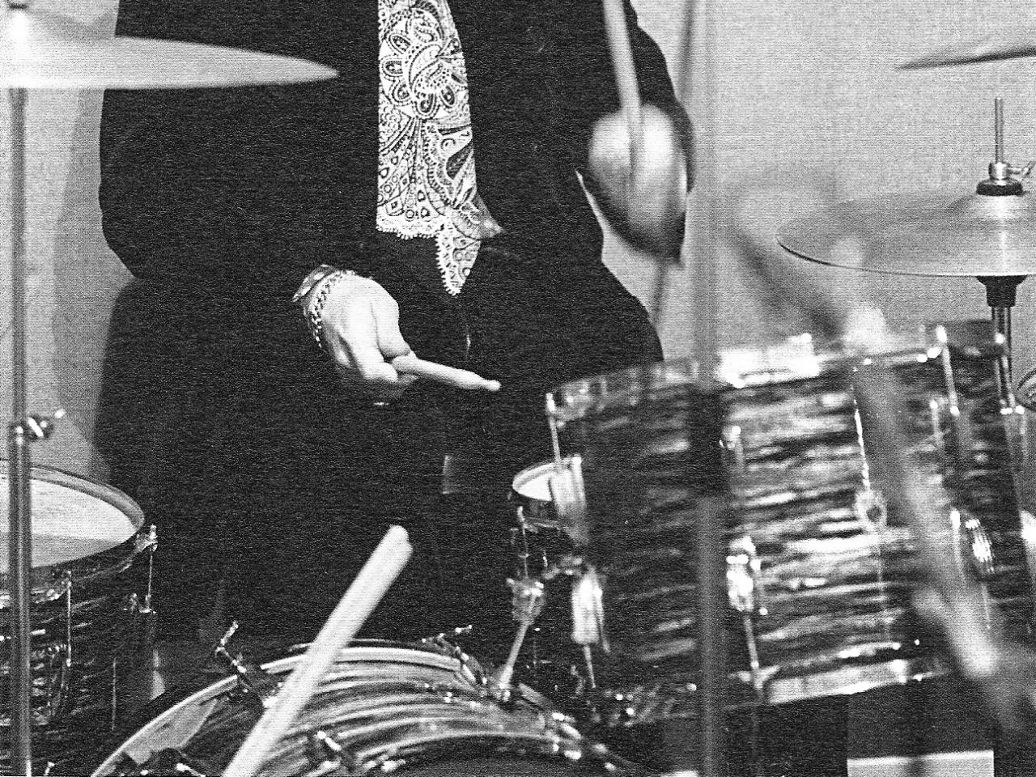 The second verse begins immediately afterward. Noteworthy differences include the drum fills in the first two measures and Paul's first harmony line in the third measure on the word “people.” Lennon's solo lines “often enough to know” and “nothing that doesn't show” are both mimicked by George on guitar this time around. The final piano swell in the eleventh measure is this time accented by a vibrant drum fill from Ringo in anticipation of the opening chorus that follows. The second verse begins immediately afterward. Noteworthy differences include the drum fills in the first two measures and Paul's first harmony line in the third measure on the word “people.” Lennon's solo lines “often enough to know” and “nothing that doesn't show” are both mimicked by George on guitar this time around. The final piano swell in the eleventh measure is this time accented by a vibrant drum fill from Ringo in anticipation of the opening chorus that follows.
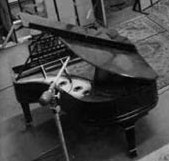 The high point of the song is then reached in this first twelve-measure chorus that displays John and Paul repeating the title of the song for the opening three measures in unison in an excited high pitch. Paul swings into harmony in the fourth measure on the words “man too.” John's vocals are sung solo in the fifth through eighth measure while his Clavioline appears in the open spaces in measures four, seven and eight. Complete instrumentation, as featured in the verses, continues throughout the chorus until the twelfth measure where another break occurs, the only elements present are the piano swell, a tambourine and a stray hand clap at the start of the measure. The high point of the song is then reached in this first twelve-measure chorus that displays John and Paul repeating the title of the song for the opening three measures in unison in an excited high pitch. Paul swings into harmony in the fourth measure on the words “man too.” John's vocals are sung solo in the fifth through eighth measure while his Clavioline appears in the open spaces in measures four, seven and eight. Complete instrumentation, as featured in the verses, continues throughout the chorus until the twelfth measure where another break occurs, the only elements present are the piano swell, a tambourine and a stray hand clap at the start of the measure.
 Then comes the third verse, which this time features a very mellow first line sung by John until Paul joins in on the third measure with a harmonized “people.” Ringo offers up some meandering "lead drums" for the first two measures while the Clavioline appears in measures five, seven and nine this time around. A droning sound which very much resembles a tamboura is heard quite prominently throughout this verse as well, undoubtedly played by George as he contributed to the song “Lucy In The Sky With Diamonds” that was recorded two months prior to this. Paul also adds some harmony in measures five and nine on the words "E" and "key" respectively. Ringo completes this verse with a snare drum fill that acts to usher in the second chorus that follows. Then comes the third verse, which this time features a very mellow first line sung by John until Paul joins in on the third measure with a harmonized “people.” Ringo offers up some meandering "lead drums" for the first two measures while the Clavioline appears in measures five, seven and nine this time around. A droning sound which very much resembles a tamboura is heard quite prominently throughout this verse as well, undoubtedly played by George as he contributed to the song “Lucy In The Sky With Diamonds” that was recorded two months prior to this. Paul also adds some harmony in measures five and nine on the words "E" and "key" respectively. Ringo completes this verse with a snare drum fill that acts to usher in the second chorus that follows.
 This chorus is identical to the previous one in most respects, the most notable differences here being additional appearances of the Clavioline (measures four, seven, eight, nine, ten and twelve) and an extemporaneously added “baby” by McCartney in the eighth measure. Paul strongly intenjects harmony in measures three and four on the words "man too." There is no break at the end of this chorus, the instrumentation continuing in full force with Paul yelping out a “Oh-oh-oh-oh” in the final measure. This chorus is identical to the previous one in most respects, the most notable differences here being additional appearances of the Clavioline (measures four, seven, eight, nine, ten and twelve) and an extemporaneously added “baby” by McCartney in the eighth measure. Paul strongly intenjects harmony in measures three and four on the words "man too." There is no break at the end of this chorus, the instrumentation continuing in full force with Paul yelping out a “Oh-oh-oh-oh” in the final measure.
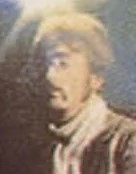 This moves directly into the concluding portion of the song, this amounting to a continual repeat of the first four measures of the chorus sung with energetic spontaneity and assorted harmonies until it fades out. Full instrumentation appears throughout this conclusion that features much uninterrupted Clavioline noodling from Lennon. The conclusion in the original stereo mix extends for only eight measures until it is faded away while the mono mix is extended for eleven measures. This moves directly into the concluding portion of the song, this amounting to a continual repeat of the first four measures of the chorus sung with energetic spontaneity and assorted harmonies until it fades out. Full instrumentation appears throughout this conclusion that features much uninterrupted Clavioline noodling from Lennon. The conclusion in the original stereo mix extends for only eight measures until it is faded away while the mono mix is extended for eleven measures.
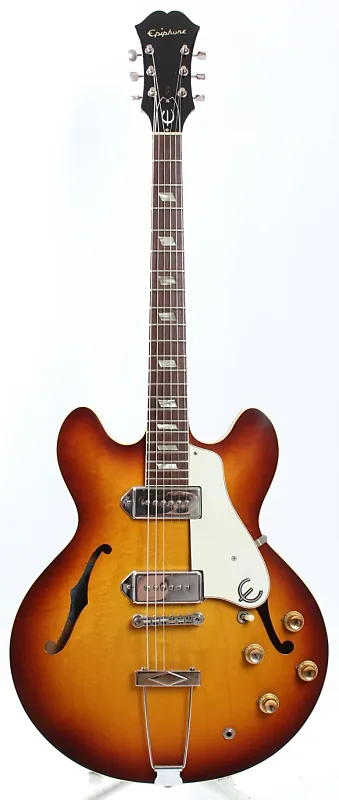 All four Beatles were fully involved in the making of this song, Paul and Ringo performing on the rhythm track with John and George on its multiple overdubs. With team spirit in full swing, they all played in top form; John on his wild Clavioline, Paul on bass and piano, George on guitar and possibly tamboura, and a very spirited Ringo on drums and various percussion. This post “Sgt Pepper” track may not have been as masterfully written or recorded, but one thing that is obvious is the fun atmosphere of the recording session that easily comes through to the listener. Everyone involved was undoubtedly having a blast recording this song. And the undeniable hook of the chorus can't help but get you to sing along, even if you have no idea why anyone would keep all their money “in a big brown bag inside a zoo!” All four Beatles were fully involved in the making of this song, Paul and Ringo performing on the rhythm track with John and George on its multiple overdubs. With team spirit in full swing, they all played in top form; John on his wild Clavioline, Paul on bass and piano, George on guitar and possibly tamboura, and a very spirited Ringo on drums and various percussion. This post “Sgt Pepper” track may not have been as masterfully written or recorded, but one thing that is obvious is the fun atmosphere of the recording session that easily comes through to the listener. Everyone involved was undoubtedly having a blast recording this song. And the undeniable hook of the chorus can't help but get you to sing along, even if you have no idea why anyone would keep all their money “in a big brown bag inside a zoo!”
American Releases
Shortly before “All You Need Is Love” was broadcast on live television on June 25th, 1967, it was decided to release the song as the next Beatles single immediately afterwards. Although “Baby, You're A Rich Man” was designated for a future release with the “Yellow Submarine” film, a b-side to “All You Need Is Love” was required in order not to delay the single's worldwide release. Therefore, the recently recorded “Rich Man” was an easy solution.
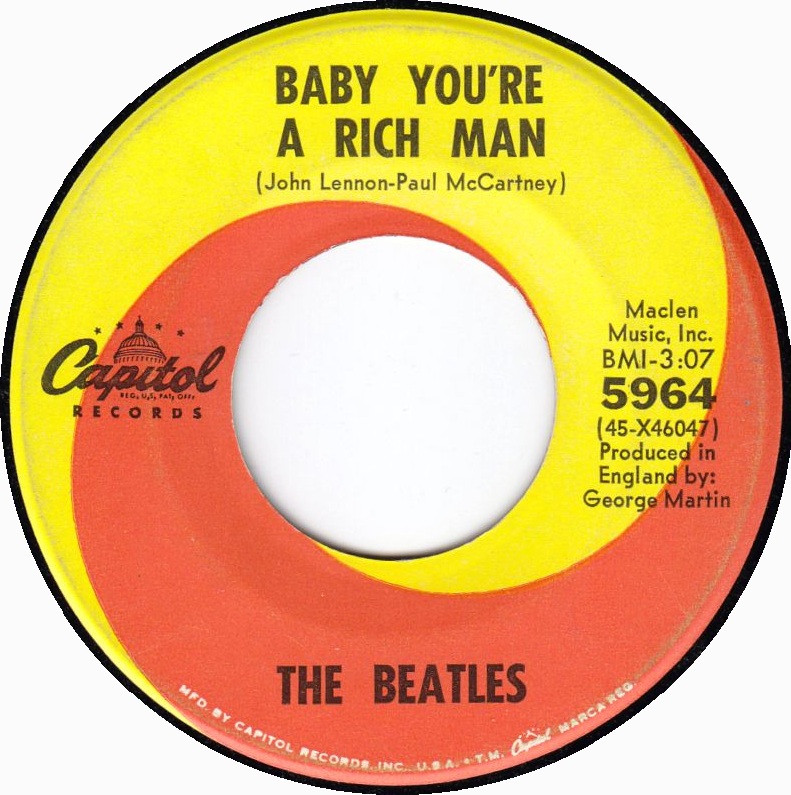 “Baby, You're A Rich Man” was first released as a single in the US on July 17th, 1967, paired with the landmark recording “All You Need Is Love.” With the buzz of the long-awaited “Sgt. Pepper” album in the air, it having just been released on June 2nd, 1967, great attention was given to this new single that was NOT on that album. After a seemingly long absence, The Beatles had a tremendous amount of material to unleash on their fans. “Baby, You're A Rich Man” was first released as a single in the US on July 17th, 1967, paired with the landmark recording “All You Need Is Love.” With the buzz of the long-awaited “Sgt. Pepper” album in the air, it having just been released on June 2nd, 1967, great attention was given to this new single that was NOT on that album. After a seemingly long absence, The Beatles had a tremendous amount of material to unleash on their fans.
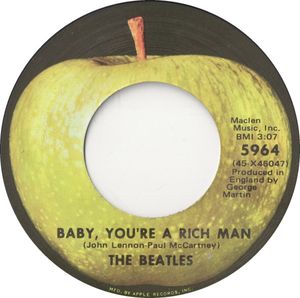 While “All You Need Is Love” made it all the way to the top of the charts, “Baby, You're A Rich Man” managed to peak within the Top 40 of the Billboard Hot 100 as well, at #34 (although the magazine mistakenly listed the song as “Baby, You're A Rich Man Now”). Interestingly, Capitol Records inadvertently gave “Rich Man” a suffix number one digit lower (45-X46047) than “All You Need Is Love” (45-X46048), something that would normally indicate which was the a-side of the single. This confusion resulted in “Rich Man” being printed on the “full-Apple” side of the single when it was eventually released on Apple Records in the '70s, “All You Need Is Love” being relegated to the “sliced-Apple” side. While “All You Need Is Love” made it all the way to the top of the charts, “Baby, You're A Rich Man” managed to peak within the Top 40 of the Billboard Hot 100 as well, at #34 (although the magazine mistakenly listed the song as “Baby, You're A Rich Man Now”). Interestingly, Capitol Records inadvertently gave “Rich Man” a suffix number one digit lower (45-X46047) than “All You Need Is Love” (45-X46048), something that would normally indicate which was the a-side of the single. This confusion resulted in “Rich Man” being printed on the “full-Apple” side of the single when it was eventually released on Apple Records in the '70s, “All You Need Is Love” being relegated to the “sliced-Apple” side.
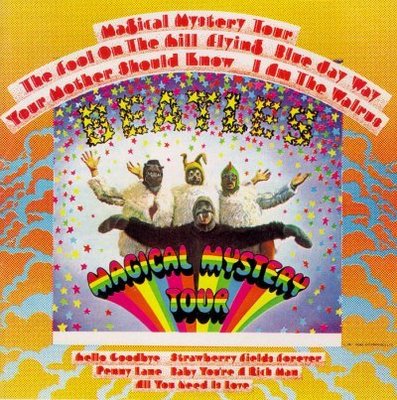 Just over four months later, on November 27th, 1967, the song was included on the US album “Magical Mystery Tour,” an album Capitol concocted to flesh out the six songs The Beatles recorded for their British television special of the same name. Since a stereo mix of the song didn't exist at the time, a fake-stereo version of the song appeared on the stereo copies of this album. The vinyl version of this album continued to be reissued in the US throughout the years, while the compact disc edition, containing a true stereo mix of "Baby, You're A Rich Man," was released on compact disc on September 21st, 1987, this CD being remastered and re-released on September 9th, 2009. Just over four months later, on November 27th, 1967, the song was included on the US album “Magical Mystery Tour,” an album Capitol concocted to flesh out the six songs The Beatles recorded for their British television special of the same name. Since a stereo mix of the song didn't exist at the time, a fake-stereo version of the song appeared on the stereo copies of this album. The vinyl version of this album continued to be reissued in the US throughout the years, while the compact disc edition, containing a true stereo mix of "Baby, You're A Rich Man," was released on compact disc on September 21st, 1987, this CD being remastered and re-released on September 9th, 2009.
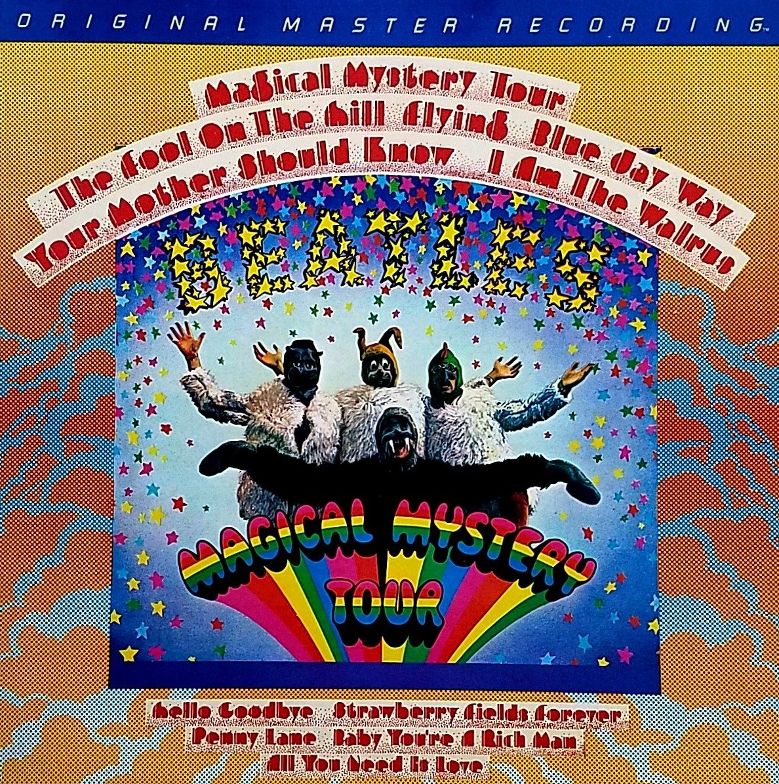 An interesting US vinyl edition of the “Magical Mystery Tour” album was released on February 1st, 1981. This was manufactured by Mobile Fidelity Sound Lab in Chatsworth, California and was part of their "Original Master Recording" series, which prepared its albums utilizing half-speed mastering technology from the original master tapes. In this case, however, they leased the master tape from EMI in the UK, not realizing that this was a second generation master tape originally supplied by Capitol Records in America. This being the case, this new release contained a second generation version of the duophonic "fake stereo" mixes of “Penny Lane,” “Baby, You're A Rich Man” and “All You Need Is Love,” this release arguably being the worst ever version of the "Magical Mystery Tour" album ever released. Also, as was the case with all of the vinyl editions of the album by this time, the original multi-page booklet was omitted from this new vinyl release. Nevertheless, this edition of the album was only available for a short time and is quite collectible today for completists who need to own even the worst available copy of the album. An interesting US vinyl edition of the “Magical Mystery Tour” album was released on February 1st, 1981. This was manufactured by Mobile Fidelity Sound Lab in Chatsworth, California and was part of their "Original Master Recording" series, which prepared its albums utilizing half-speed mastering technology from the original master tapes. In this case, however, they leased the master tape from EMI in the UK, not realizing that this was a second generation master tape originally supplied by Capitol Records in America. This being the case, this new release contained a second generation version of the duophonic "fake stereo" mixes of “Penny Lane,” “Baby, You're A Rich Man” and “All You Need Is Love,” this release arguably being the worst ever version of the "Magical Mystery Tour" album ever released. Also, as was the case with all of the vinyl editions of the album by this time, the original multi-page booklet was omitted from this new vinyl release. Nevertheless, this edition of the album was only available for a short time and is quite collectible today for completists who need to own even the worst available copy of the album.
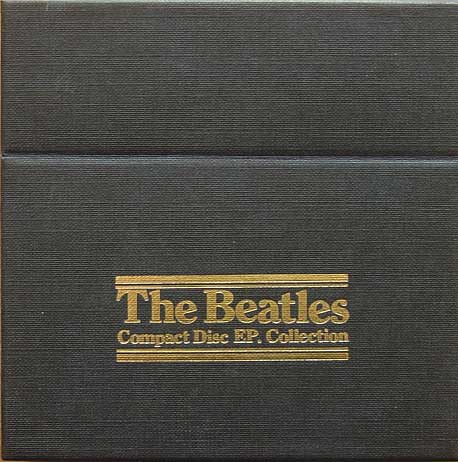 On June 30th, 1992, the CD box set entitled "Compact Disc EP Collection" was released which featured a bonus disc that also contained the true stereo version of "Baby, You're A Rich Man." On June 30th, 1992, the CD box set entitled "Compact Disc EP Collection" was released which featured a bonus disc that also contained the true stereo version of "Baby, You're A Rich Man."
In February of 1994, the “Baby, You're A Rich Man” single was re-released by Capitol Cema as a jukebox single on pink vinyl, which is quite a collectible today.
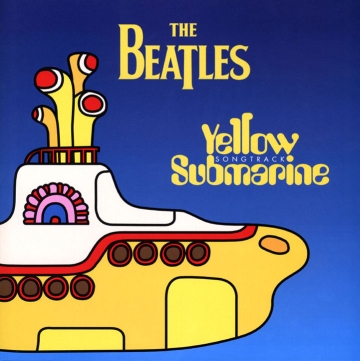 September 13th, 1999 was the release date of “Yellow Submarine Songtrack,” which was put together as a companion piece to the recently re-released video/DVD of the movie. While “Baby, You're A Rich Man” did not appear on the original “Yellow Submarine” soundtrack released in 1969, a snippet of the song appeared in the film which earned it a spot on this new release. A newly mixed and remastered version of the song makes it sound more vibrant than ever. Sadly, this version did not make it onto the newly remastered releases of 2009, keeping instead to the official stereo mix of the song from 1971. The album peaked at #15 on the Billboard album chart. September 13th, 1999 was the release date of “Yellow Submarine Songtrack,” which was put together as a companion piece to the recently re-released video/DVD of the movie. While “Baby, You're A Rich Man” did not appear on the original “Yellow Submarine” soundtrack released in 1969, a snippet of the song appeared in the film which earned it a spot on this new release. A newly mixed and remastered version of the song makes it sound more vibrant than ever. Sadly, this version did not make it onto the newly remastered releases of 2009, keeping instead to the official stereo mix of the song from 1971. The album peaked at #15 on the Billboard album chart.
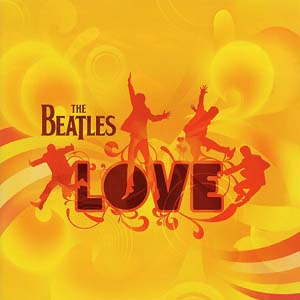 The November 20th, 2006 released compilation album "Love" featured snippets of “Baby, You're A Rich Man” on two of its selections. John Lennon's distinctive Clavioline playing was included on the track “Lucy In The Sky With Diamonds” and vocals from the song are featured on the track “All You Need Is Love.” The November 20th, 2006 released compilation album "Love" featured snippets of “Baby, You're A Rich Man” on two of its selections. John Lennon's distinctive Clavioline playing was included on the track “Lucy In The Sky With Diamonds” and vocals from the song are featured on the track “All You Need Is Love.”
 On September 9th, 2009, the CD box set “The Beatles In Mono” was released, which contained the entire mono Beatles catalog in a newly remastered condition, “Baby, You're A Rich Man” being among the collection. The vinyl edition of this box set was first released on September 9th, 2014. On September 9th, 2009, the CD box set “The Beatles In Mono” was released, which contained the entire mono Beatles catalog in a newly remastered condition, “Baby, You're A Rich Man” being among the collection. The vinyl edition of this box set was first released on September 9th, 2014.
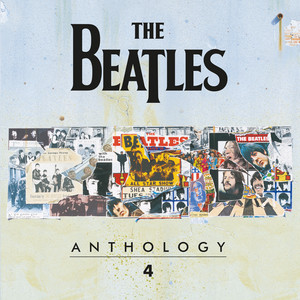 On November 21st, 2025, "Anthology 4" was released on both CD and vinyl, this album also being made available within the "Anthology Collection" box set on CD and vinyl. "Take 11 and 12" of "Baby, You're A Rich Man" as recorded at Olympic Studios on May 11th, 1967, as detailed above, was included on this release. On November 21st, 2025, "Anthology 4" was released on both CD and vinyl, this album also being made available within the "Anthology Collection" box set on CD and vinyl. "Take 11 and 12" of "Baby, You're A Rich Man" as recorded at Olympic Studios on May 11th, 1967, as detailed above, was included on this release.
Live Performances
 The Beatles were well past their touring life at this stage, but there is one known time that “Baby, You're A Rich Man” was performed by a Beatle. On August 7th, 1967, just three weeks after the single was released in the US, George Harrison and entourage decided to make a brief visit to the Haight-Ashbury district of San Francisco, California, to visit the highly publicized “beautiful people” of the area. The Beatles were well past their touring life at this stage, but there is one known time that “Baby, You're A Rich Man” was performed by a Beatle. On August 7th, 1967, just three weeks after the single was released in the US, George Harrison and entourage decided to make a brief visit to the Haight-Ashbury district of San Francisco, California, to visit the highly publicized “beautiful people” of the area.
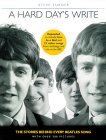 According to David Swanson of the San Francisco Chronicle, “A young man was entertaining a crowd of about twenty hippies. Harrison and his wife listened for a minute and then Harrison asked, 'Can I borrow your guitar?' The young man said, 'Sure.' Harrison took the guitar and started to play...hippies clambered down hills, dropped from trees and sprang from behind bushes. A sizeable crowd formed. Harrison played for about ten more minutes and then shouted, 'Let's go for a walk'...And off they went. Harrison strumming the guitar with the hippies following along.” George relates, “We walked into a park and it just became a joke. All these people were just following us along.” At this point, as outlined in Steve Turner's book “A Hard Day's Write,” “George sat on the grass, listened to other people's songs and then started to sing 'Baby, You're A Rich Man.'” According to David Swanson of the San Francisco Chronicle, “A young man was entertaining a crowd of about twenty hippies. Harrison and his wife listened for a minute and then Harrison asked, 'Can I borrow your guitar?' The young man said, 'Sure.' Harrison took the guitar and started to play...hippies clambered down hills, dropped from trees and sprang from behind bushes. A sizeable crowd formed. Harrison played for about ten more minutes and then shouted, 'Let's go for a walk'...And off they went. Harrison strumming the guitar with the hippies following along.” George relates, “We walked into a park and it just became a joke. All these people were just following us along.” At this point, as outlined in Steve Turner's book “A Hard Day's Write,” “George sat on the grass, listened to other people's songs and then started to sing 'Baby, You're A Rich Man.'”
Other than a few seconds of the song appearing in the movie “Yellow Submarine,” which was released in the US on November 13th, 1968, “Baby, You're A Rich Man” has never again been performed by any Beatle.
Conclusion
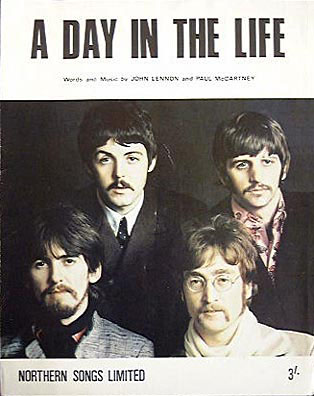 It has been postulated that the Lennon / McCartney collaboration efforts had disintegrated as the years progressed, resulting in Lennon and McCartney writing individually and, at best, allowing the other to put in his two-cents after the song was otherwise completed. While this has proven to be true, even disintegrating into each of them not bothering to include the others' input toward the end of the partnership, in 1967 they were beginning to experiment in their collaborative efforts. One would have a partial song written, the other would have another partial song written, and they would piece them together. Earlier this year, the masterful “A Day In The Life” was written this way, as was 1969's “I've Got A Feeling.” In this same way, “Baby, You're A Rich Man” came to fruition, resulting in a lighthearted romp of psychedelia that was just as fun for them to create as it is for us to listen to. It has been postulated that the Lennon / McCartney collaboration efforts had disintegrated as the years progressed, resulting in Lennon and McCartney writing individually and, at best, allowing the other to put in his two-cents after the song was otherwise completed. While this has proven to be true, even disintegrating into each of them not bothering to include the others' input toward the end of the partnership, in 1967 they were beginning to experiment in their collaborative efforts. One would have a partial song written, the other would have another partial song written, and they would piece them together. Earlier this year, the masterful “A Day In The Life” was written this way, as was 1969's “I've Got A Feeling.” In this same way, “Baby, You're A Rich Man” came to fruition, resulting in a lighthearted romp of psychedelia that was just as fun for them to create as it is for us to listen to.
Song Summary
“Baby, You're A Rich Man”
Written by: John Lennon / Paul McCartney
- Song Written: May, 1967
- Song Recorded: May 11, 1967
- First US Release Date: July 17, 1967
- US Single Release: Capitol #5964
- Highest Chart Position: #34 (b-side to "All You Need Is Love")
- First US Album Release: Capitol #SMAL-2835 “Magical Mystery Tour”
- British Album Release: Parlophone #PCTC 255 “Magical Mystery Tour”
- Length: 3:07 (mono) 2:58 (stereo)
- Key: G major
- Producer: George Martin
- Engineers: Keith Grant, Geoff Emerick, Eddie Kramer
Instrumentation:
- John Lennon - Lead Vocals, Clavioline (Selmer Concert)
- Paul McCartney - Bass (1964 Rickenbacker 4001 S), Piano (Steinway Grand), backing vocals
- George Harrison - Guitar (1965 Epiphone Casino ES-230TD), handclaps, tamboura?
- Ringo Starr - Drums (1964 Ludwig Super Classic Black Oyster Pearl), tambourine, maracas, handclaps
- Eddie Kramer - Vibraphone
- Mick Jagger - Backing vocals ?
Written and compiled by Dave Rybaczewski
|
IF YOU WOULD LIKE TO MAKE A DONATION TO KEEP THIS WEBSITE UP AND RUNNING, PLEASE CLICK BELOW!
|